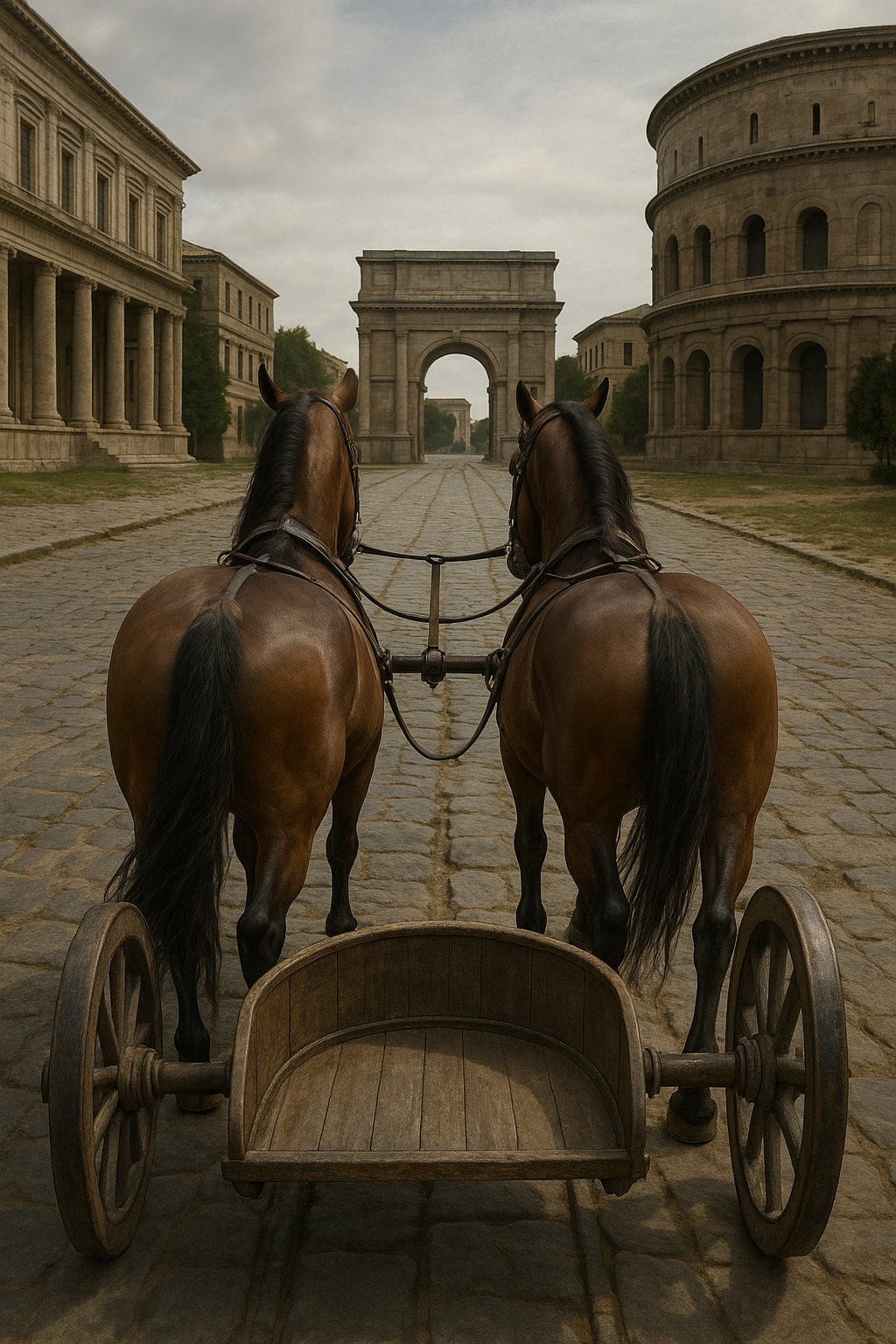

Ever wondered why so many things—roads, railroads, even the axles on cars—seem to share a standard width? It all goes back to... two horses’ asses. Literally.
In ancient Rome, war chariots were pulled by two horses side-by-side. To avoid wearing down roads unevenly, these chariots followed ruts already carved into stone by countless others. The ruts became the “standard gauge,” spaced just wide enough for two horse rear-ends to fit comfortably between the shafts. That width? Roughly 4 feet, 8.5 inches.
Fast forward a few thousand years.
When railroads were first built in England—the birthplace of modern trains—engineers used the same spacing. Why? Because they were building rails along old wagon roads... and those roads had been designed for wheels spaced exactly like those ancient Roman chariots. The standard railroad gauge stuck, crossing the ocean to America and eventually becoming the norm for everything from wagons to Model Ts.
Even today, that spacing influences how roads are designed, how axles are manufactured, and how vehicles align with everything from garages to car washes.
So the next time you’re driving your car or riding a train, just remember: you're following in the ruts of Roman empire logistics... and it all started with two horses’ asses.
